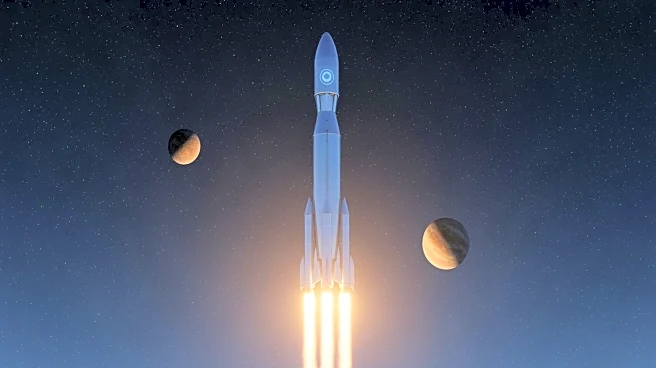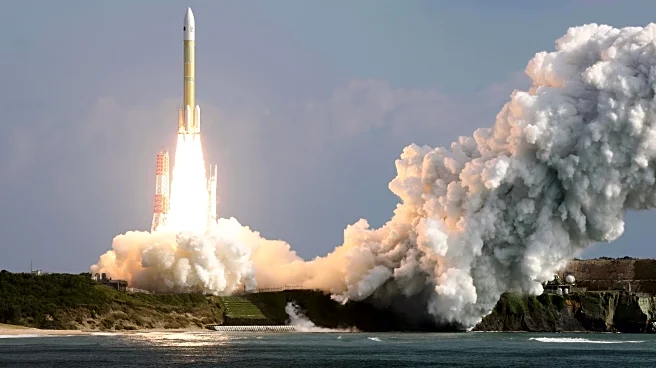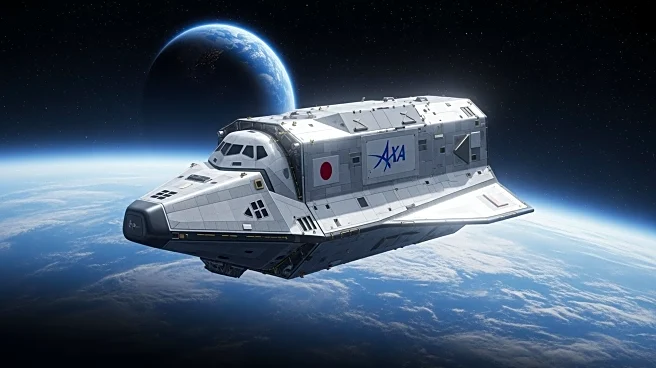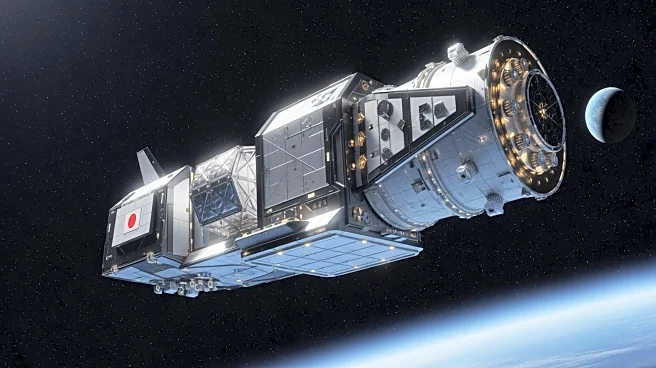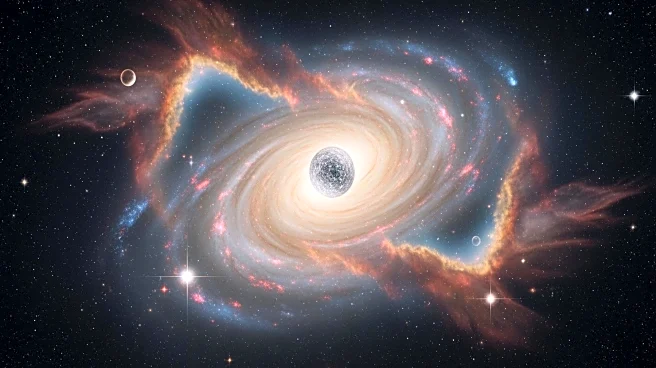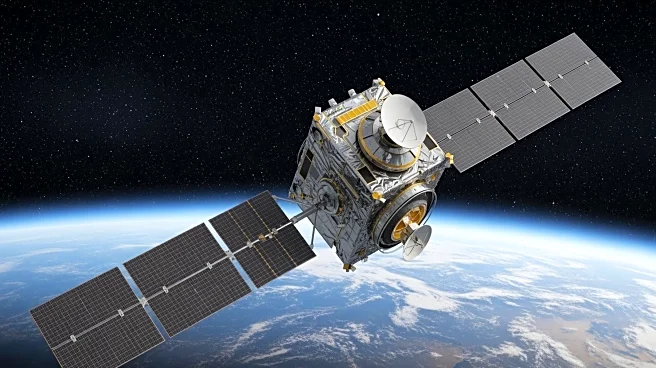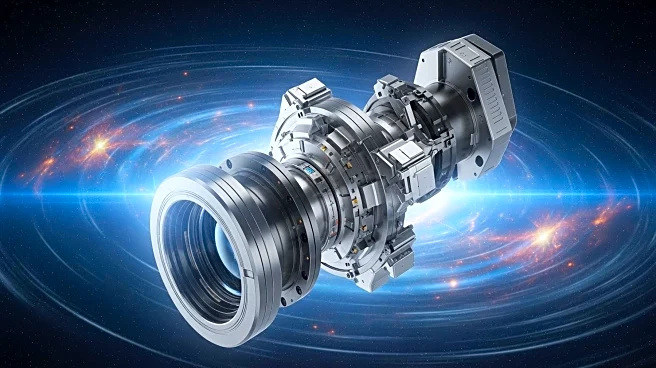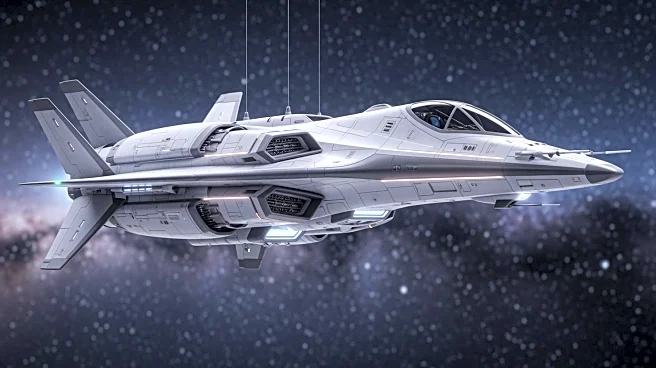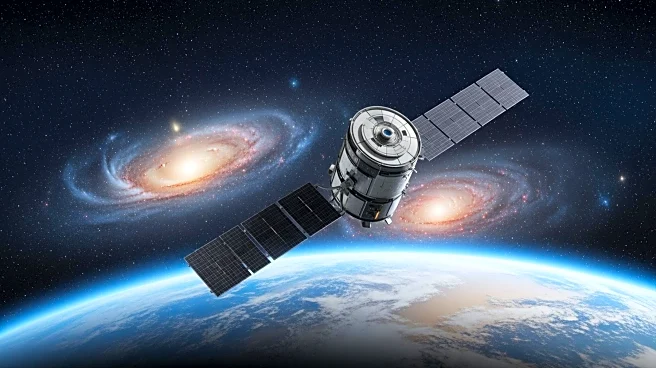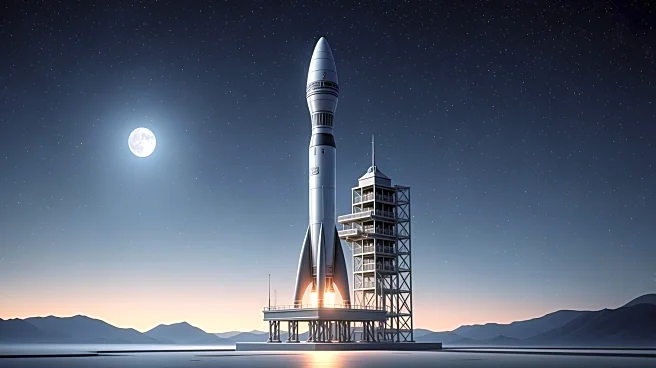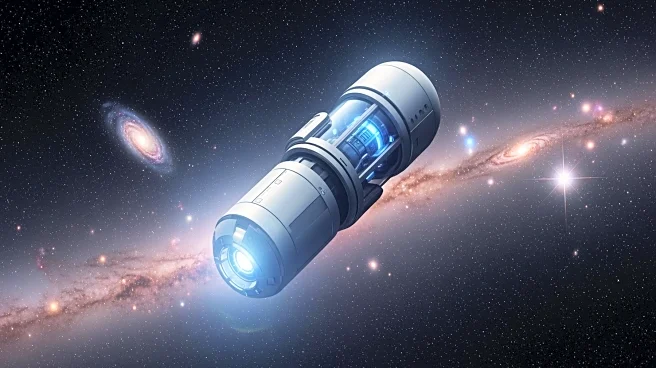What's Happening?
Japan's space agency, the Japan Aerospace Exploration Agency (JAXA), has successfully launched its new flagship H3 rocket, carrying an unmanned cargo spacecraft, HTV-X1, on its first mission to deliver
supplies to the International Space Station (ISS). The launch took place from the Tanegashima Space Center in southern Japan. The HTV-X1 spacecraft was successfully separated and placed into its planned orbit. It is expected to arrive at the ISS in a few days, where Japanese astronaut Kimiya Yui, currently stationed at the ISS, will capture the craft using a robotic arm. The HTV-X is an advanced version of JAXA's previous H-II Transfer Vehicle, known as Kounotori, which completed nine missions to the ISS between 2009 and 2020. The new spacecraft can carry a larger payload and supply power during flight, allowing for the transport of temperature-sensitive materials.
Why It's Important?
The successful launch of the H3 rocket marks a significant milestone for Japan's space program, enhancing its capabilities in space transport and national security. The H3 rocket is designed to be more cost-competitive in the global space market, replacing the older H-2A rocket. This development is crucial for Japan as it seeks to establish a stable and commercially viable space transport system. The ability to deliver supplies and retrieve waste from the ISS, along with conducting technical missions, positions Japan as a key player in international space collaboration. The success of the H3 rocket also reflects Japan's commitment to advancing its space technology and maintaining a competitive edge in the space industry.
What's Next?
Following the successful launch, the HTV-X1 spacecraft is expected to dock with the ISS in the coming days. Once docked, it will deliver supplies and retrieve waste from the station. The spacecraft is designed to remain connected to the ISS for up to six months, after which it will conduct additional technical missions during an orbital flight lasting three months. The continued success of the H3 rocket could lead to more frequent and cost-effective missions, potentially increasing Japan's involvement in international space projects and collaborations.
